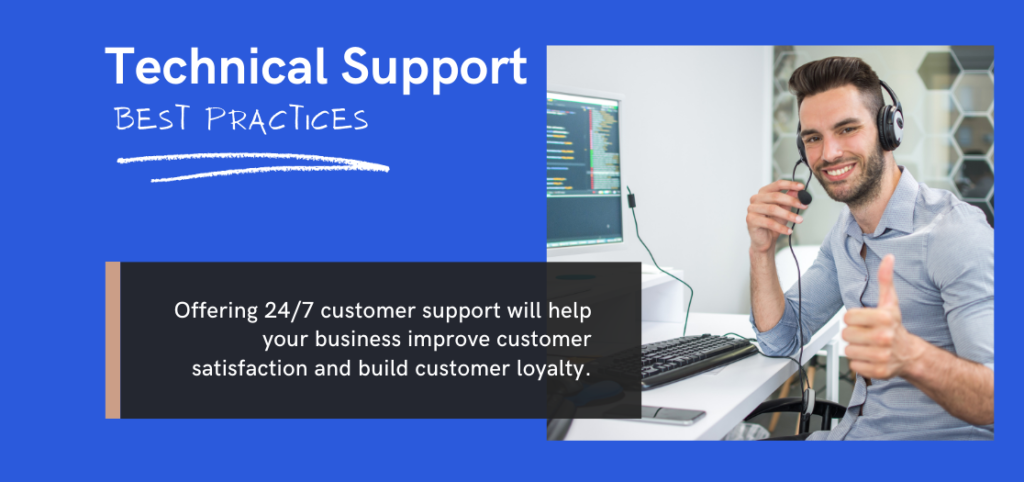Building a relationship with your clients is key to long-term success. One of the best ways to build a strong relationship with your clients is by anticipating their expectations and then delivering on them.
Don’t be mistaken! There’s no one-size-fits-all approach to keeping clients happy – but there are some general guidelines to follow.
This blog post is for you if you want to provide your clients with a stellar experience that will keep them coming back for more.
Here are six tips on anticipating customer needs and creating a win-win situation for both you and your clients.
6 Clever Tips To Anticipate Customer Needs and Gain Their Loyalty
Pro Tip #1: Put Yourself in the Clients’ Shoes
The best way to anticipate customer needs is by understanding their business and what they are looking to achieve.

Whenever possible, have a conversation with your new customers to learn more about their needs.
Top Questions To Ask Your Customers:
- What are your goals? TIP: make sure these are measurable goals.
- How can our service/ our company, contribute to your success?
- What would make you feel like a success story?
Pro Tip #2: Create a Customer Journey Map
Creating a customer journey map will give you a clear idea of the customer buying journey and help you predict potential client questions and issues before they arise.
A well-defined customer journey map will allow you to proactively address pain points before they arise or become significant roadblocks in the customer relationship.
Anticipating your customers’ needs and expectations when purchasing a product from your company could be the difference between gaining new customers or losing them.
What’s included in a customer journey map?
- The buying journey.
- Expectations and goals.
- Pain points.
- Proactive solutions.
Step-by-Step Process To Create a Customer Journey Map
- Define your buyer personas. Create a customer journey map for each buyer persona.
- Research how your clients find your company (organic search, paid ads, referrals, etc.)
- What do they do once they get to your website? What pages do they visit, do they ask for support (via live chat, email, phone), what is the average purchase time? What steps do they need to follow to become a client?
- Identify obstacles that may deter customers from purchasing and how those might be addressed (slow website, complex sign-up process, unclear website content, etc.).
- Map out potential client pain points.
- Brainstorm solutions to help clients reach their desired outcomes with ease.
- Understand what your clients are looking to achieve with the use of your service and set expectations.
Pro Tip #3: Allow Customers to Influence Company Decisions
If you want to anticipate your clients’ needs, it only makes sense to ask for their input and let them have a say on how the business should evolve.
How to make customers part of the decision-making process:
- Get their input on what new products or services you should offer next. What’s missing from the mix, what would make them achieve their goals easier, what could make the client experience better than before?
- Be accountable! Share your company roadmap with your clients – let them know what’s coming next and how soon they can expect to see new features/services.
- When launching a new product or service, make customers early beta testers – get their feedback before making your new service available to the general public. What could say “I value my customers’ input!” more than this?
Pro Tip #4: Make Customer Feedback More Accessible
There are many ways for clients to provide feedback through social media or email. However, a process is only effective if it’s efficient; therefore, you need an organized and timely approach when collecting customer feedback.
How To Collect Customer Feedback the Right Way
- Create a dedicated customer feedback email address, for example, [email protected], where customers can submit feedback or feature requests.
- Create a customer feedback form on your website, in-app notifications, and social media platforms. You can link this feedback form to the email address you have previously created to gather all feedback in a centralized place.
- Let clients know when they should expect a change. Customers need to know how much time it will take for their feedback to be acted upon and which department will review their comments.
- Don’t forget to thank your customers for taking the time to share their feedback and valuable insights.
- Implementing these steps will encourage more people to provide their honest opinion and help you identify any service gaps that need to be addressed as soon as possible.
Pro Tip #5: Conduct Regular Customer Surveys

Customer surveys help companies identify customer expectations and learn how to serve their needs better. Businesses that measure customer satisfaction often find they have increased customer retention and loyalty.
There are a variety of ways to measure customer experience. Here are the most common types used by businesses.
Net Promoter Score (NPS)
NPS is a way of measuring customer loyalty by asking customers to rate on a scale of 0-10 how likely are they to recommend your company.
Client Satisfaction Surveys
consist of questions about the quality of service received from the company. The company then uses this information to identify client expectations and learn how to better serve its clientele.
Customer Effort Score (CES) surveys
CES measures how much effort the client had to put in for any given interaction. The CES rating ranges from 0-100, where 100 means extremely easy, and 0 means very difficult.
Examples of CES Questions Are:
- Rate the ease of use of feature X.
- Rate how easy it was to find information about service Y on our website.
How To Create Customer Surveys That Will Get Results
- Conduct client satisfaction surveys regularly.
- Keep surveys sweet and short. No one likes 30-minute surveys.
- Include a mix of open-ended questions and “yes or no” questions.
- Share the survey results with everyone on the team.
- Keep track of feedback so that you can identify repeated issues.
- This one is golden! Always and I always follow up with customers that provided feedback.
Pro Tip #6: Offer 24/7 Stellar Technical Support
Providing 24/7 customer support shows that your customers are your top priority.
Offering 24/7 customer support will help your business improve customer satisfaction and build customer loyalty. You will also have the opportunity to identify customer expectations better and learn how to serve your customers better.
To provide 24/7 excellent Technical Support, try these best practices.
Technical Support Best Practices

- Offer a dedicated support email address ([email protected]) and/or phone number where your clients can always reach the technical team.
- Use customer support software that enables your team to prioritize support tickets, collaborate easily, and keep track of customer interactions.
- Implement an SLA (Service Level Agreement) – an SLA sets client expectations for an agreed-upon level of service.
- Answer client questions promptly.
- Know what you don’t know! – “I don’t know” is an acceptable answer as long as it’s followed by “but I will find out.”
- Always follow up with customers if you are unable to answer their questions right away.
- Learn how your clients use your services so that you can proactively offer support.
- Offer an FAQ page or Knowledgebase where they can find answers themselves on-demand.
Conclusion
Customers are an essential part of every business, but ensuring high-quality customer service can be challenging.
In this blog post, we’ve listed six pro tips on how to anticipate client needs. These six tips will help you deliver an exceptional customer experience and gain your customer’s loyalty.
About SoftSys Hosting
At SoftSys Hosting, we take pride in providing stellar customer support 24/7. Our team is here to help you with every part of your online business journey: from getting your project or website successfully launched to scaling large traffic mission-critical websites.
With a team of in-house experienced sysadmins, we’ll do all the heavy lifting so you can focus on what’s important – growing your business.
Let us know how we can help you with your VPS hosting, dedicated server, or cloud hosting needs! Contact us at [email protected] or +1-862-214-2255 (Ext 203).